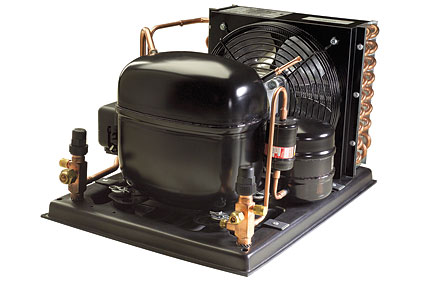In order for this oil to return to the compressor, it must travel through the system with the refrigerant and return back through the compressor’s suction port. This oil movement requires the compressor to be in operation. If the compressor is cycled off too quickly, an imbalance is created. Each time the compressor starts, oil is pumped out, but without sufficient run time the oil stays out in the system and does not return to the compressor. This imbalance will lead to a shortage of oil inside the compressor and bearing failure.
Even a compressor with an oil pressure safety control may not be able to prevent this problem. If the compressor cycles off before the time delay of the oil pressure switch elapses, the compressor will restart discharging a little more oil, then cycle off. On each start oil is lost and eventually a sufficient amount of oil will have left the compressor, causing it to cycle on and off without a sufficient amount of oil to lubricate its bearings.
So a minimum run time is just as important as a minimum off time for a compressor. Short run times can lead to a failed compressor. A compressor timer may not help resolve this issue. Normally a time delay holds a compressor off for a period of time, but does not manage the run time of the compressor. The run time is typically controlled by the system’s operating controls.
Short run times can be the result of several system issues, some of which are:
• A pressure or temperature control with too low of a differential;
• A shortage of refrigerant causing a compressor to cycle on its low pressure control; and
• A dirty condenser or defective condenser fan motor, which can cause a compressor to short cycle on its high pressure switch (assuming the high pressure switch has an automatic reset).
Any time a compressor has failed, a technician needs to find the root cause and correct it before the replacement compressor fails as well. Determining the cause of the failed compressor may not be possible on the initial inspection. However, once the replacement compressor is in operation the entire system should be inspected to find the cause of the failure. This is not always an easy task, but it is an important part of the service provided to a customer. Having the replacement compressor fail due to an unresolved system issue is not good for the technician, his company, or the customer.
Publication date: 6/4/2012



Report Abusive Comment